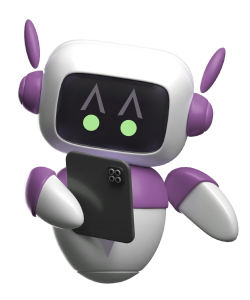Gone are the days of clunky user interfaces; AI agents are reshaping the tech landscape and our relationships with the devices we depend on. AI-driven tools take the reins, charting their own course and responding swiftly to every twist and turn, all without constant human supervision. They’re not here to take over the world; AI agents are designed to enhance our lives.
As we go about our daily business, invisible digital workhorses are running interference, absorbing the tedious little tasks and keeping our days humming along smoothly. From the voice-controlled speaker in your living room to the algorithms detecting suspicious activity in your bank account, their capabilities are far-reaching. AI agents have existed since the early 1960s.
How AI Agents Work: The Basics
AI agents use advanced algorithms and machine learning. They can better gauge their environment, think critically, and react quickly – all thanks to this. They follow a cycle of sensing, thinking, and acting.
Data rolls in through multiple channels as AI agents get to work. With their algorithms humming in the background, they’re able to interpret the data in a way that’s both logical and intuitive. The decision-making process kicks in, and they settle on the right move. Encountering novel scenarios prompts continuous improvement, generating a compounding effect that enhnaces the customer’s overall journey.
Key Components of AI Agent Architecture
AI agents rely on several components to work effectively. If you’re going to build AI agents that can hold their own, you need to be current with the rapid pace of AI innovation.
- Sensors actively collect data on their surroundings.
- Actuators perform actions.
- Knowledge base stores facts and rules.
- Inference engine reasons and makes decisions.
- Performance takes a serious leap forward when you incorporate powerful learning algorithms.
The parts mesh in perfect harmony. Natural language processing gives the AI agent the power to jump between different domains, handling tasks with ease and accuracy.
Types of AI Agents: From Simple to Sophisticated
AI agents have unique capabilities. Let’s explore the main types and start learning about their utility:
Simple Reflex Agents
Simple reflex agents are the most basic type. Behind every action, there’s a coded set of instructions that dictate their moves. Right now, these rules spark actions solely based on what’s happening around us.
A simple reflex agent example is a thermostat. The thermostat activates heating if the temperature falls too low. They are best for simple tasks with fully observable environments.
Model-Based Reflex Agents
Model-based reflex agents maintain an internal world model. It’s like having a team of analysts poring over social media feeds 24/7 – this internal model helps them identify patterns and stay on top of environmental fluctuations.
A robot vacuum cleaner is an example. It builds a map of your home as it cleans. With this map in hand, the vacuum charts its course, making sure to leave no spot unchecked.
Goal-Based Agents
Goal-based agents pursue specific goals set by developers. Whether it’s months or years from now, they’re vividly imagining the outcomes they want – and consistently laying the groundwork to achieve them.
A clear-cut example is your favorite GPS: it’s a constant hunt for the shortest path, demonstrating the worth of timely information. Picture this: you’re stuck in rush hour, and suddenly your navigation system reroutes you to avoid the chaos – that’s because it’s factoring in traffic volume.
Utility-Based Agents
Utility-based agents aim to maximize utility based on their utility function and expected utility. Balancing many plates at once, they rely on the razor-sharp analysis of artificial intelligence to inform their decisions.
For instance, a stock-trading AI is a utility-based agent. Instead of taking a foolhardy leap, it weighs the pros and cons to find the sweet spot for investment.
Learning Agents
Learning agents continuously improve through experience. Over time, their path to better decision-making is paved by paying attention to what works and what doesn’t.
E-commerce recommendation systems illustrate learning agents. By monitoring user actions, customized product picks are curated just for them. Human resources, healthcare, finance – wherever problems lurk, learning agents expertly tease out patterns to develop solutions.
The Benefits of AI Agents: More Than Just Automation

AI agents offer numerous advantages. They streamline various processes:
Enhanced Efficiency and Productivity
AI agents automate complex tasks, improving productivity. As these systems automates the mundane, humans are left to devote their energies to the high-leverage activities that drive real progress.
McKinsey’s researchers uncovered a startling trend – AI-generated content has become the norm. With these tools, businesses are revamping the way they function from the inside out. Imagine amplifying your output while streamlining your workflow – that’s exactly what these technologies promise to deliver.
Improved Decision Making
AI agents analyze large data sets. This ability can improve accuracy as well as the ability to identify patterns humans may miss.
Now, imagine a doctor’s super-sharp analytical mind merged with a computer’s data-crunching powers – that’s essentially what happens when AI works with patient data to identify potential diseases. They might catch potential problems human doctors may not immediately notice. Multiple AI systems working in harmony with human insight – that’s the winning formula.
Personalized Experiences
Learning agents provide tailored user experiences. Taking aim at real customer wins, they mastermind individualized connections that foster genuine trust, sizzle with relevance, and deliver spot-on recommendations that feel like they’re speaking your language. Any effective AI plan relies heavily on the incorporation of this critical component.
AI services on platforms like Netflix use agents to personalize suggestions. The more you watch, the better they get at suggesting new shows you’ll devour.
Scalability
AI agents handle increasing workloads without significant resource increases. Changing demands don’t catch businesses off guard when they’ve got the right tools to adapt.
Error Reduction
AI agents minimize human errors. The pressure to get it right escalates in critical areas, and generative AI models respond by delivering meticulous accuracy, driving business growth in pace with the precision demands. Builders of these agents have expertly woven together multiple programming layers, granting them the ability to operate effectively in low-touch scenarios, where tasks are handled with swift precision.
From Code to Reality: The Tangible Impact of AI Agents
In sector after sector, AI agents are getting the attention of experts and everyday people alike. Our goal is to help you shine online, and that means serving up custom marketing guidance that’s built around your business.
Customer Service and Support
AI-powered chatbots are changing customer service. From clarifying tiny details to fixing big headaches, they’ve got a support system that’s always ready to lend a hand.
AI agents for marketing automate customer segmentation. Whether it’s churning out fresh content or refining campaign strategies, they bring their A-game. Human connection is at the heart of their game-changing service, where users come first and attention to detail is paramount.
Healthcare
Healthcare benefits from AI agents in various tasks. From planning the best course of treatment to urgently prioritizing patient needs, we take care of it all. Hospitals are going digital, leveraging machine learning to shave hours off medical image analysis and fine-tune resource management – a perfect blend of tech and tender loving care.
Finance and Trading
AI in finance assists in algorithmic trading and fraud detection. With AI agents on the job, market trends are swiftly assessed, and hours of manual labor are shaved off the workload.
From art to music, fashion to film, the creative industries burst with colorful storytellers shaping culture.
Nowadays, video editors and music composers can breathe a sigh of relief, thanks to the helping hand of AI agents that bolster their creative endeavors. AI agents are basically clever collaborators, jumpstarting the content creation process with their fast thinking and clever ideas.
Autonomous Vehicles
Self-driving cars are prime examples of AI agents. They navigate with complex agent networks that perceive the environment. Boosting performance is just the beginning – the real payoff comes when you start to see human-like outcomes that were previously out of reach.
Challenges and Considerations
AI agents come with challenges: These solutions continue to improve performance as their software continues to be developed.
Ethical Concerns
AI agent autonomy raises ethical questions about accountability. Making ethical choices – it’s a question of how we respond when faced with a moral dilemma.
Data Privacy and Security
AI agents need vast amounts of data. Confidentiality isn’t just a buzzword – it’s our north star, guiding every decision we make to keep your sensitive info protected.
Job Displacement
While AI creates new jobs, existing jobs might be affected. With AI advancing at breakneck speed, it’s our responsibility to equip workers with the skills they need to stay ahead of the curve.
Transparency and Explainability
The decision-making process of some AI agents isn’t easily understood. This “black box” nature of certain agents requires increased transparency.
artificial intelligence is crafting its most ambitious blueprint yet: an age where machines not only augment our capabilities but start to function as entity unto themselves. The next chapter awaits – full of promise and surprise.
The field of AI is constantly evolving:
More Human-Like Interactions
Natural language processing improvements promise better interactions. Virtual assistants and chatbots will feel more natural, accomplish complex goals and provide a greater degree of service than previously available.
Increased Autonomy
Future AI agents may possess greater decision-making capabilities. They will be able to accomplish more complex tasks autonomously. Human intervention will continue to become less necessary.
Collaborative AI Agents
Multiple AI agents could collaborate. AI that’s fleet-footed and able to adjust on the fly helps decision-makers by streamlining their workflow, making resource allocation a breeze, and giving them back a big chunk of their day.
Next-gen innovations are an open door to endless possibilities – think machine learning and artificial intelligence breakthroughs that can supercharge your vision.
Imagine if AI, IoT, and augmented reality worked in perfect harmony – the possibilities would be endless. As we push the boundaries of technology, fresh applications will start to emerge in a range of areas, including those that serve up tailored suggestions based on individual preferences. First, you’ll need to bring in a brain trust of developers and AI whizzes who can crack the code on making it all work together.
FAQs about AI agents
What do AI agents do?
Autonomous software programs, called AI agents, step up to tackle tasks on their own. Their sensory gears are always turning, checking in on their space, thinking critically, and reacting to reach their desired outcomes. Whether it’s auto-generating instant answers or diving into hairy healthcare or financial conundrums, these problem-solver agents are on it. AI specialists lend a hand to companies, stepping in to configure AI systems and make their internal processes more efficient.
What are the 5 types of AI agents?
The five types are: 1) Simple reflex agents, 2) Model-based reflex agents, 3) Goal-based agents, 4) Utility-based agents, and 5) Learning agents. Simple reflex agents act on current perceptions while model-based agents consider past events.
Goal-based agents work towards specific goals, utility-based agents try to maximize value, and learning agents adapt based on experience. By focusing on these five core types, developers can expand AI’s reach into fresh territories and imaginative projects.
Is chat gpt an AI agent?
ChatGPT is a type of AI, a large language model, rather than a traditional AI agent. It generates human-like text, but does not act autonomously. ChatGPT lacks an AI agent’s ability to perform tasks independently.
How many AI agents are there?
There’s no fixed number of AI agents. Companies constantly roll out fresh agents to tackle specific jobs and industries. AI development and applications continuously evolve and expand, including working with natural language processors, to better assist human users with tasks.
Here’s the final thought – after exploring all the ins and outs, we’ve landed at the last stop.
As AI_steps in, the boundaries between humans and technology are growing fuzzier by the day. problems don’t stand a chance – they’re finding answers in everything from science to tech. Learning systems – ranging from basic to highly advanced – are embedded in countless aspects of our lives. This might mean tweaking fuel efficiency to squeeze more miles out of every gallon, or lending a hand to HR to streamline internal tasks.
Decisions, decisions – AI is making them better, faster, and more informed across multiple sectors every day. With digital tools rapidly maturing, AI solutions are now perfectly positioned to exploit the upsurge in innovation and creativity. Crafting a winning AI strategy demands that you tackle two sides of the same coin: the tremendous opportunities and the considerable obstacles that come with them.
The possibilities with AI agents are only starting to be realized. So the next time you engage with AI tools, like using tools with embedded AI services, or having your car navigate its environment based on set goals and current road conditions, you are witnessing the evolution of AI agents firsthand. In the customer service trenches, skilled agents toil away, equipping companies with the tools they need to wow their customers. With innovation breeding innovation, AI services are surging forward across the board, propelled by considerable investment and the kind of creative problem-solving that arises from diverse, cutting-edge minds coming together.
 AI agents offer numerous advantages. They streamline various processes:
AI agents offer numerous advantages. They streamline various processes:
 AI agents offer numerous advantages. They streamline various processes:
AI agents offer numerous advantages. They streamline various processes:





